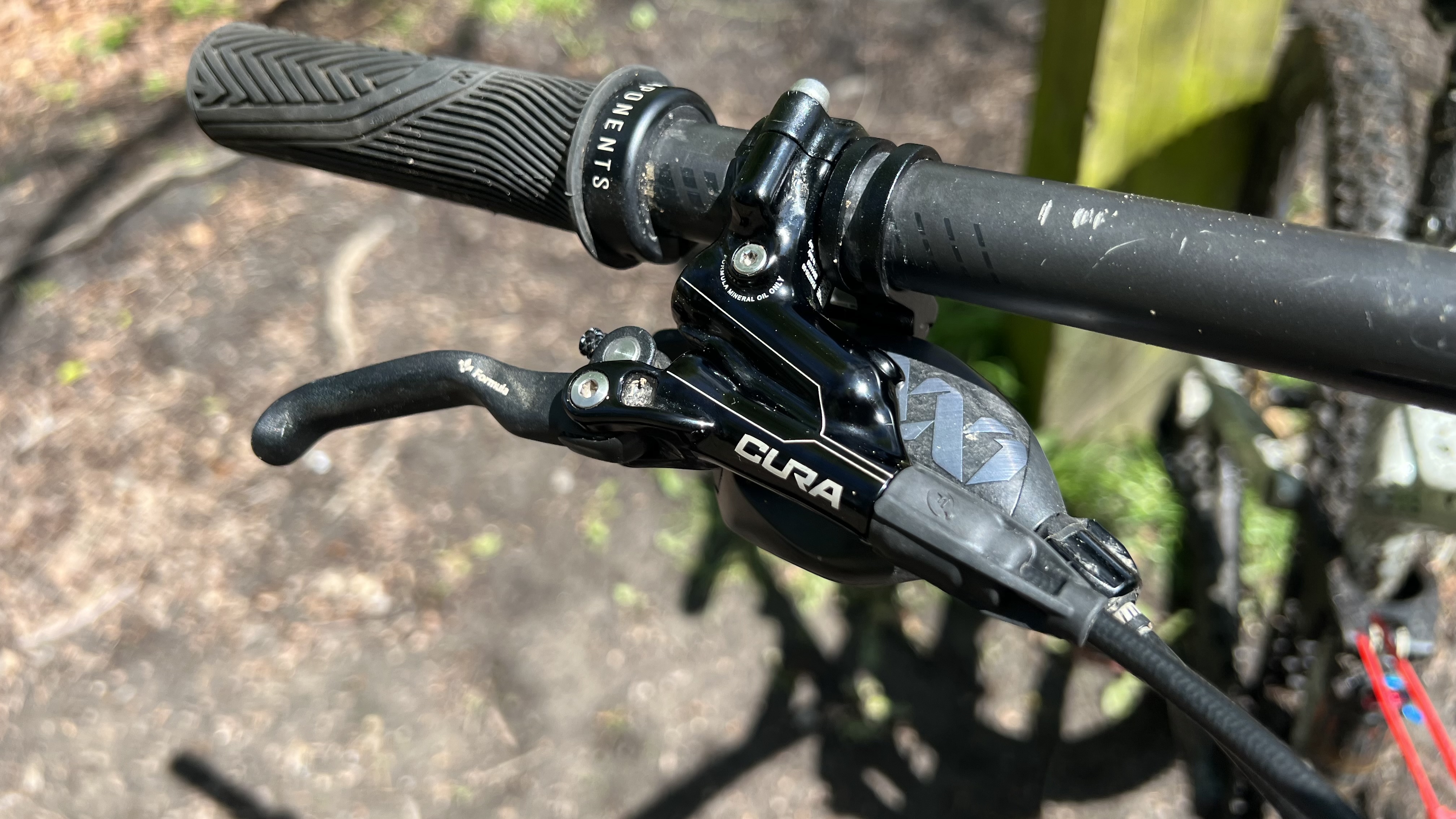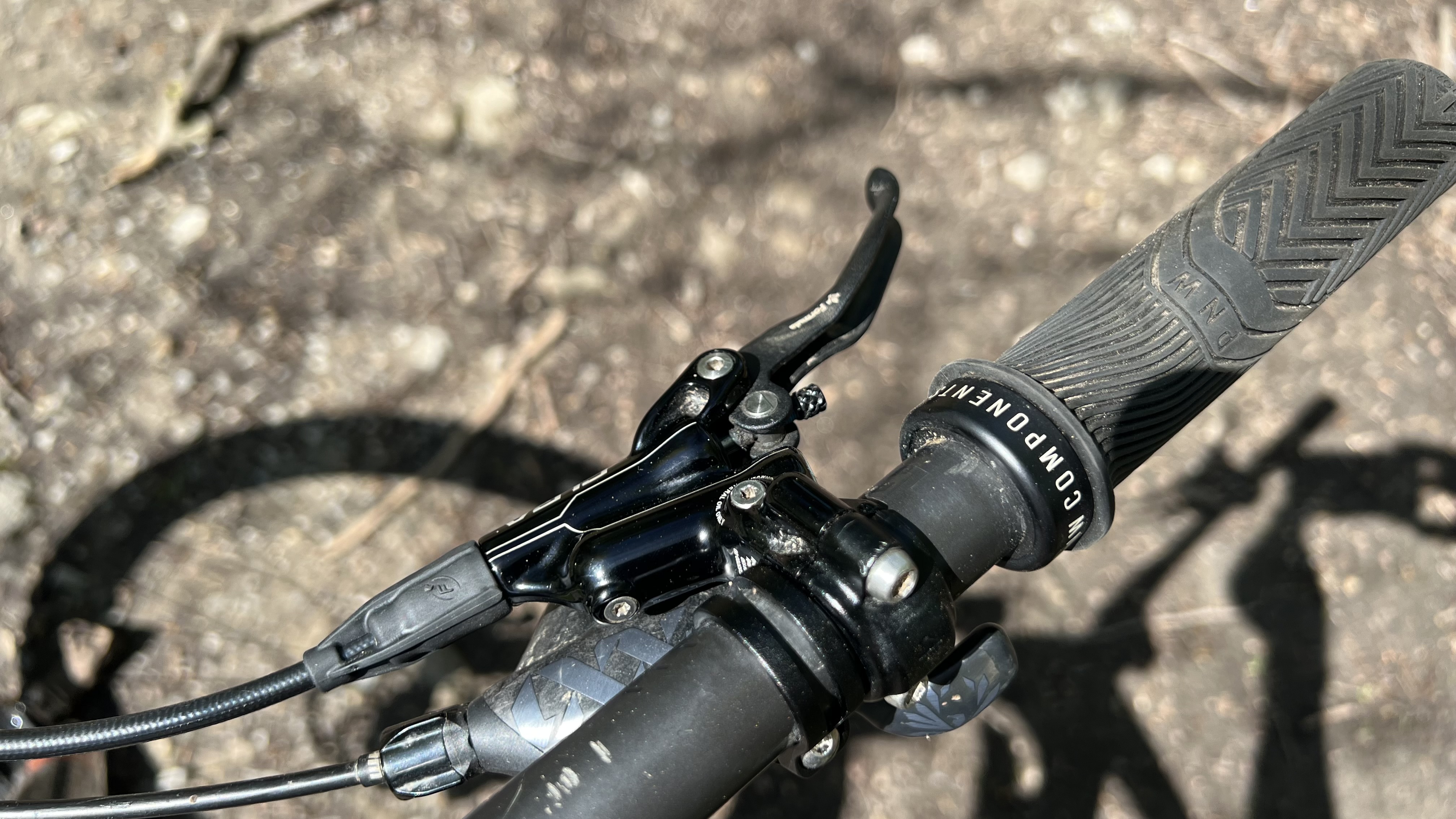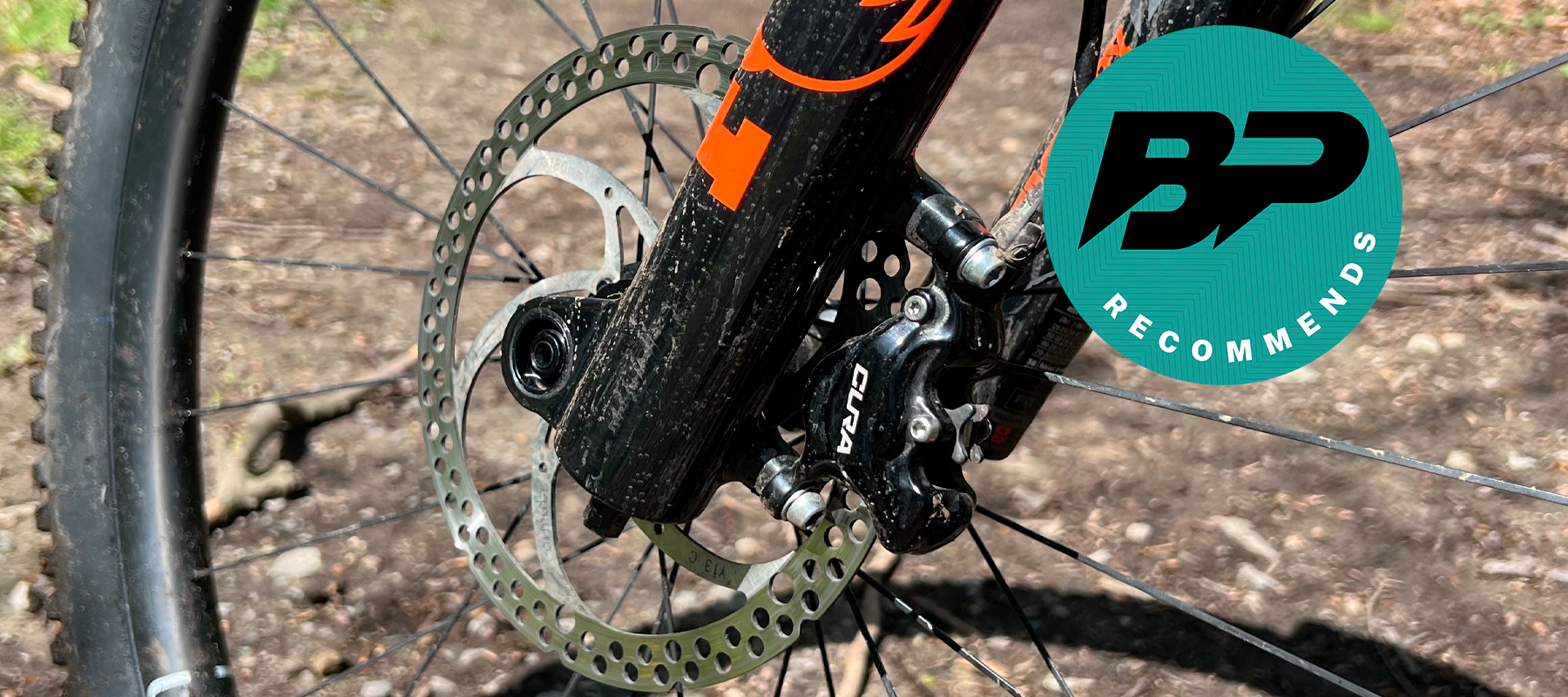Bike Perfect Verdict
If you’re looking for an affordable brake with high power to weight performance, fantastic feel and alternative appeal and don’t need easy adjustment or Alpine drag tolerance the Formula Cura is a great choice.
Pros
- +
Low weight for plentiful power
- +
Light and smoothly squeezed lever pull
- +
Consistent power application and bite point
- +
Excellent pad life
- +
Spare pads and fit kit supplied
Cons
- -
Lack of easy bite point adjustability
- -
Get the Cura 4 for heavy duty use
- -
Spares might be sparse
Why trust BikePerfect
With Formula’s deep roots in the mountain biking industry (they produced one of the first fully hydraulic MTB disk brakes) and the motorbike space, it’s fair to say they know what they’re doing. The new Cura demonstrates that with impressive power to weight performance and excellent smooth feel control at a price that won’t break the bank.

Design and specification
The Cura follows Formula’s distinctive ‘athletically muscular’ vibe with the closely forged lever and caliper allowed minimal use of material while ensuring sufficient structural support to bolster the sturdy lever feel. Braided hoses as standard further bolster the prestigious Italian aesthetic. so if you’re looking for mountain bike brakes that look like Michelangelo was involved then Formula are the way to go.
The two-piece clamp is easy to use and Formula have thankfully stopped using tiny, easily strippable alloy bolts. Mix-Master adaptors allows gear shifters and dropper levers to be mounted on the same clamp as the brake lever, removing clutter and adding to the stealthy look of the levers. The caliper’s oversized 24mm oval pistons (most brakes use 20mm or smaller round pistons) are paired with Formula’s organic pads as standard, but a spare set of sintered pads are supplied in the box together with a spare connection kit, which is a nice touch. The Cura is Formula’s first brake to use mineral oil rather than DOT fluid and they claim to have formulated an oil compound with a lower freezing point and boiling point than that of a DOT brake fluid. The brakes are supplied with both hoses full length though, so you’re going to need to cut down at least one. The optional SpeedLock hose-caliper connection joints allow for a quick release and instant seal for seamless brake replacement, without any concern of leaking mineral oil everywhere or the need to bleed. You can choose between the single piece steel rotors I tested or an alloy centre floating rotor for less weight and better heat management.
Lever reach can theoretically be adjusted with a tiny knurled alloy knob behind the blade, but it's become super stiff over time so now I have to turn the 2.5mm socket in its center with a hex key. Bite point can only be changed by tweaking the bleed process so it’s awkward to balance. The relatively short calipers make scuff-free rotor alignment easy and there’s plenty of pull back clearance too.

Performance
Once I’d set them up on the bike the Curas bedded in exceptionally quickly to produce an assertive but subtle rotor bite. Despite only having two pistons, the lightweight brakes proved to boast a far higher power output than I expected. In fact, having only ridden SRAM and Shimano brakes before, the Cura was a real surprise with its incredible consistency when it came to the linear relationship between lever travel and power output. This linear progression proved to be one of the main selling points for me, as it made brake modulation beautifully predictable.
The organic pads, preinstalled in the caliper, performed effortlessly in the dry and added to the predictable nature of the brake. Remarkably they’ve shown little sign of wear despite 100 of kilometers in all weathers, from the UK to the Alps.
However, I found that once the rain started coming down, it took a little bit of warming up to get all the power I was used to. This was generally no issue, but caught me out in heavy braking zones on steeper tracks at times. Switching to the spare sintered pads increased wet bite noticeably making them the best choice for UK use. They do produce more noise and heat though, so they need more care on big mountain terrain. Even with the resin pads, I found power would begin to tail off at the bottom of the longest descents. Bottoming out of the blade pivot on the rubber stopper can become an issue at this point, but excessive brake fade only occurred a handful of times over months of riding. If that’s a potential issue for you, then there’s a 4-piston Cura 4 option that adds a bit of weight and is harder to set up due to the longer calipers, but offers more power and heat resistance for enduro racing / e- bike or DH use.
That meant the only real negative I found was the lack of easy bite point adjustment compared to Hope or top tier SRAM brakes. While I’ve had zero problems with reliability, Formula are a relatively rare brand to shop for these days.
Verdict
Throughout months of testing, these brakes saw every kind of track and condition from freezing torrential downpours to heatwave dust bowls; tight steep off-piste tracks to flat-out bikepark descents in the Alps. I handed the brakes over to Guy Kesteven for a full winter/spring/summer of UK use and he’s been similarly impressed and doesn’t seem at all keen to give them back to me.
Overall, the Cura seems to sit in a ‘downcountry’ sweet spot that perfectly suits an all-rounder, do-it-all rider who wants good power, great feel and low weight. They’re certainly a formidable opponent against trail brakes such as the SRAM G2 or Shimano XT / SLX and they’re very good value for money. If you need more power for enduro racing / e-bike or DH use though, look at the Cura 4 option instead.
Tech specs: Formula Cura brake
- Weight: 488g for front brake and 180mm rotor
- Colors: Glossy Black (tested), Polished, Gold
- Price: $122.50 / £108.05 / €124.00 per brake, rotors from £25
- Guy KestevenTechnical-Editor-at-Large

